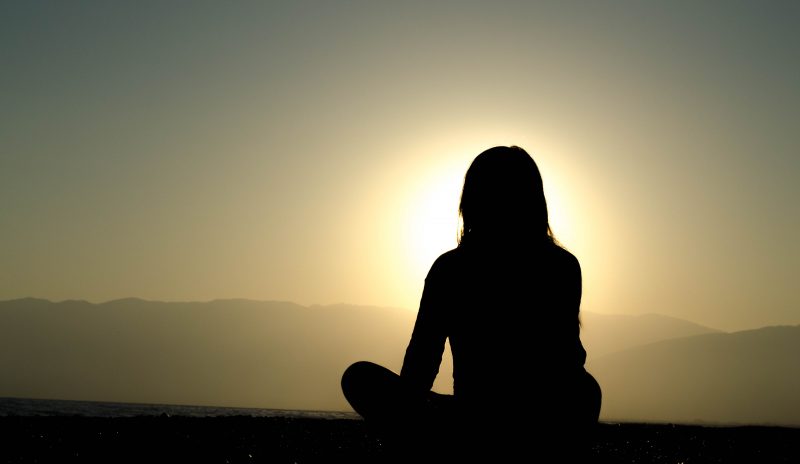Enjoy the Silence
It’s the name of one of my favorite songs from one of my favorite bands, Depeche Mode (a band that plays a prominent part in the plotting of my still-work-in-progress novel I’m currently revising).
But learning to “enjoy the silence” is also something I’ve grown to crave the older I get. More and more, I’m realizing that success in life has everything to do with how good you feel, and success for me is about feeling inner peace inside, to shut down the “fight or fight” sympathetic nervous system and to instead activate the portal to the parasympathetic (“rest and digest”) nervous system.

Below are some thoughts on enjoying the silence in your life — portals that transport you to a magic time that brings about relaxation, ease and bliss:
Meditation
Many times in my life, I have tried to meditate. The first time I discovered meditation, I was in a yoga class at San Francisco State University. My teacher told us that yoga was a way to enter meditation, which we did as a class in the dark. As someone who is perpetually tense — toes tightly gripping the floor, calves pressed against the legs of my chair and stomach clenched in agony — meditation was the first time I experienced inner peace.
I had heard that practicing regularly can help make you more calm, more focused. After all, I dreamed of the day I’d finally be comfortable in my own skin. I was sick of drowning in my own negative thoughts. So I began to meditate more. With CDs, on my own, I read books my writing mentor gave me on Kundalini, a book by Jack Kornfield. I attended sits at spots in Marin County at Spirit Rock. POC sits in Oakland. Day-longs. Walking meditations. I signed up on a waiting list for a 10-day silent meditation retreat near Yosemite in Northern California but didn’t get in. I thought about signing up for TM, but it seemed too expensive. I began to use apps from Calm and Headspace and Shine. They were all amazing. But then I found Ziva. I had read Emily Fletcher’s book, watched a few of her videos, loved her soothing-like-honey voice, so decided to give her online course a shot, on how to cultivate a regular daily meditation practice. I liked the part about actually including manifesting into the meditation, along with breath work and mindfulness, for cognitive performance. Now, since May of 2019, I’ve been meditating for about 20 min almost daily, and for a while there, I was meditating twice a day. It’s made such a difference in my mood and sleep, as well as anxiety around to-dos and people. Since we moved from living full-time in the RV to an apartment, I’ve fallen off the wagon and just meditate mostly once a day, first thing when I wake up. My goal this year is to meditate twice again, to fit that second meditation into my afternoons. I did it yesterday and really feel the difference today. I may look into a group meditation place in Austin…
NADA (aka AcuDetox)
Yesterday I sat in a large circle of strangers and shut my eyes, patiently awaiting the needles in my ears. he first time I did it, I was nervous. I didn’t like needles and I didn’t like pain. But the needles are so tiny, thinner than thumbtacks, and as the volunteer from the graduate school of integral medicine in the acupuncture school gently inserted paper-thin acupuncture needles into both ears, I felt a buzz of bliss. The NADA protocol (ear acupuncture) is a non-verbal approach to healing emotional trauma, as well as addiction. It was even used with healing children after the disaster that was the Nepal earthquake.
Early Morning Solitude
There is something about being awake in the morning surrounded by darkness that feels so healing. With no one around, no chatter around you, this solitude wraps you up like a warm blanket, comforting your nerves, your mind. It’s almost 7am CT here in Austin, TX, but it is still dark outside. Of course, I can see cars with their headlights blaring whiz by outside the windows, where I sit and write. But there is no one within proximity. No one awake. My kid is still sleeping. Soon, I’ll make coffee and breakfast for him. But for now, I bathe in this healing solitude, parked in front of my laptop, breathing in sheer ease.
I am realizing I’m actually most energized in the morning, actually enjoy the quiet mornings when I wake up early. The other morning I awoke at 4am to drive my friend who was visiting me to the airport. After dropping her off, I decided to drive myself to a 24-hour diner (Magnolia Cafe) on South Congress and eat an early breakfast of eggs and meat. It was still around 5am. I was one of a handful of people eating that early, and even as I yawned, I marveled at being up, actually awake, eating while most people were still dreaming. It brought me memories of my early twenties, when I worked in San Francisco doing tech support for an online stock trading company that required its customer-facing employees to be up the same time as the stock markets opening in NYC. Back then, I was living in an apartment in San Francisco with about four others my age (my share of the rent then was merely $300, unheard of now, I’m sure). And every morning, I’d drive my bike toward Market Street from where I lived near the Castro area, carefully maneuvering my bike so as not to get caught in the Muni train tracks, so as not to fall. My sister, who was a bike messenger in San Francisco, had warned me about that. I remember the quiet of the dark mornings as I rode to work, greeted by a shock of bright florescent in-door office lights as I walked to my cubicle area to answer calls from traders at home who were still making sense of the internet, in a time of Compuserve, AOL and Mozilla.
The words tend to pour out of me in the morning, which is a fantastic time to do your Morning Pages, as Julia Cameron suggests is a way to empty out your mind, to clear out the debris, like windshield wipers does to grimy car windows.
HeartMath
What do I want to say about HeartMath? It’s a biofeedback tool I discovered that helps you meditate from your heart, bringing your heart, mind and nervous system together to reduce anxiety in a state they call “coherence.” I don’t use it everyday, but when I do, I feel more compassion and kindness for myself and others, similar to how I feel when I practice the kindness meditation (when you say to yourself and others in your mind: “May you be happy, healthy and filled with ease”). You use a sensor you attach to your earlobe and open up the HeartMath Inner Balance app which senses your pulse and heart rate variability, able to tell you if you’ve reached a coherent state. It’s interesting to practice when you’re anxious or angry, because you can see your heart rate variability in real time, jagged, at first. But then as you focus on a memory of a happy time or place in your life, the jagged valleys turn into even sine waves, reflecting inner ease (I think about the one time I tried LSD for the first time as an adult with the intention to heal while at Burning Man and experienced the utmost of peace and tranquility, completely egoless and suspended in a space where time was never running out, an example of how integrating psychedelics into your regular daily life can be useful). I even ordered their book on how to use Heart Math to manage anger, which has been helpful as a parent of a teenager.
All this is to say that cultivating silence, truly learning to enjoy the silence more in my life, is key to my sanity, my mental health and physical health. After all, everything is linked!
